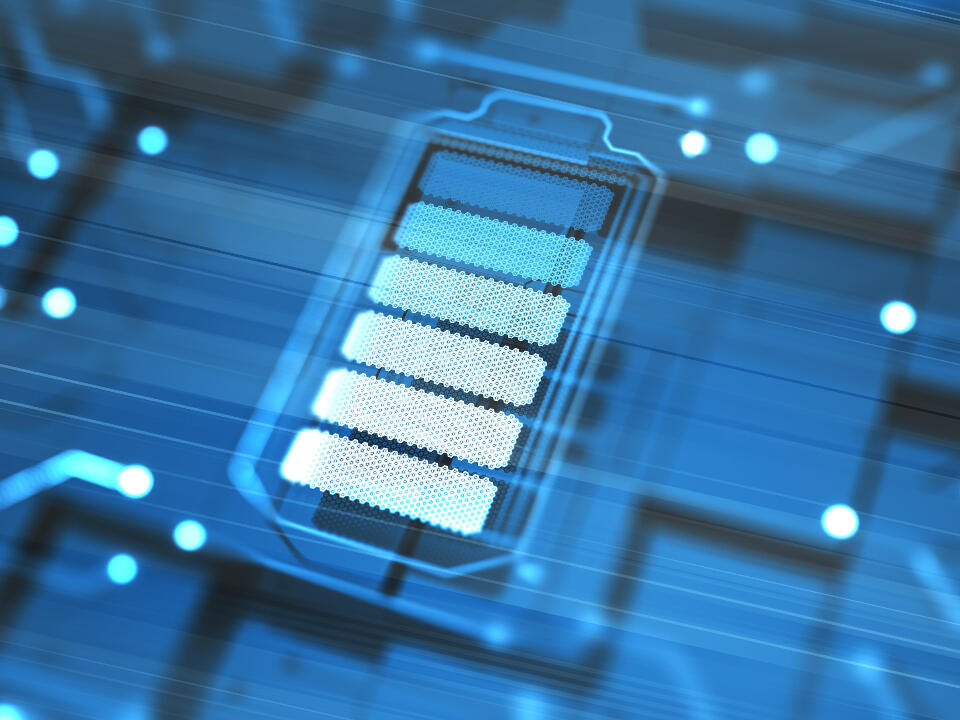There are lots of sexy areas of tech for recent software and hardware engineering grads to focus on. Artificial intelligence (AI)! Crypto! Quantum computing! Robotic process automation! 5G wireless! Batteries!

Batteries? Yes, batteries. As computer scientist Rodney Brooks recently stated, “If I were to offer advice to an ambitious young graduate today, I’d have one word for her: ‘Batteries.'”
Batteries may not seem as sexy as faster processors or 0-to-60-in-1.98-seconds Teslas, but they’re the things that allow us to use those processors (and cars) for longer periods of time. As such, batteries are one of the most critical areas of technology innovation today, but we have a long way to go before we can celebrate the next big advance in battery technology.
Innovation speed differentials
Over the past 30 years, Brooks wrote, “Batteries have gotten a whole lot better, but they have not gotten Moore’s-Law better.” (Moore’s Law states that the number of transistors in a dense integrated circuit doubles about every two years.) In fact, he continued, we will almost certainly never see that kind of improvement, for reasons that Moore pointed out back in 1965, as Brooks explained:
In digital electronics, all you need to do is detect a voltage—or not—to establish whether a binary digit is a “1” or a “0.” The actual amount of current the voltage can drive does not really matter. So you can repeatedly halve the amount of matter in each transistor and still have a working circuit. For batteries, however, we need to store energy in a material, using a reversible mechanism so that we can tap that energy later. And because we pack that matter as full of energy as we can, halving the amount of matter halves the amount of energy we can store. No Moore’s Law. Not ever.
This isn’t to say batteries can’t get better–obviously they can, which is why we’ve seen lithium-ion batteries get 13% better every year since they were commercially introduced in 1991, according to one study. Lots of money is flowing into battery R&D as we attempt to improve battery life for things as varied as mobile phones, electric cars and renewable energy grids.
To be clear, we need those improvements, and not merely to get to expanded ranges for electric cars. For example, Tesla is fond of talking up the two-million mile lifespan of its batteries, but the real world may not be kind to such projections. Like the speed of using Supercharger stations to top up your Tesla? Every time you do, it kills long-term battery life. This isn’t Tesla’s fault––it’s just how batteries work (supercharging involves more electrical current creating more heat, which degrades the battery). And it’s not just Tesla batteries: There’s a careful dance required to baby your smartphone batteries (don’t let them dip close to 0%, etc.) to ensure maximum battery life.
No one really wants to think about this. We just want to drive our electric cars, text on our smartphones, etc., which is why we need battery technology to improve, since our habits probably won’t.
The future of batteries
One problem with battery innovation is that it isn’t something venture capitalists can dump money into for quick returns. As Dag Pedersen of Mascot AS has noted:
With almost all battery types, development time is typically extended–10 years is commonplace–with many concepts abandoned in the laboratory, and others having their initial launch dates put back, often multiple times, when these are found to be unrealistic. This extended development time makes battery manufacture an unattractive proposition for investors–meaning it takes real commitment and patient, understanding benefactors to bring a new type of battery to market. It is hardly surprising, therefore, that the successful launch of a new battery is not only a rarity but a major event….
That’s the bad news. The good news is researchers are finding success with a number of new options. For example, new generation lithium-ion (“can store more lithium in positive and negative electrodes and will allow for the first time to combine energy and power”), lithium-sulfur (“A Li-S battery uses very light active materials: sulfur in the positive electrode and metallic lithium as the negative electrode…[making] its theoretical energy density…extraordinarily high”), and solid-state batteries (“permits the use of innovative, high-voltage high-capacity materials, enabling denser, lighter batteries with better shelf-life as a result of reduced self-discharge”).
Add to these a wide array of other experiments in improved battery technologies (cobalt-free lithium-ion batteries to lower costs, silicon anode lithium-ion batteries that replace graphite to dramatically increase capacity, etc.). In other words, there’s a lot going on in battery R&D, much of which I predict will likely fail, but with so much at stake, we can expect improvements that should, hopefully, improve on that 13% per year number cited above.
There are lots of sexy areas of tech for recent software and hardware engineering grads to focus on. Artificial intelligence (AI)! Crypto! Quantum computing! Robotic process automation! 5G wireless! Batteries!
Batteries? Yes, batteries. As computer scientist Rodney Brooks recently stated, “If I were to offer advice to an ambitious young graduate today, I’d have one word for her: ‘Batteries.'”
Batteries may not seem as sexy as faster processors or 0-to-60-in-1.98-seconds Teslas, but they’re the things that allow us to use those processors (and cars) for longer periods of time. As such, batteries are one of the most critical areas of technology innovation today, but we have a long way to go before we can celebrate the next big advance in battery technology.
Innovation speed differentials
Over the past 30 years, Brooks wrote, “Batteries have gotten a whole lot better, but they have not gotten Moore’s-Law better.” (Moore’s Law states that the number of transistors in a dense integrated circuit doubles about every two years.) In fact, he continued, we will almost certainly never see that kind of improvement, for reasons that Moore pointed out back in 1965, as Brooks explained:
In digital electronics, all you need to do is detect a voltage—or not—to establish whether a binary digit is a “1” or a “0.” The actual amount of current the voltage can drive does not really matter. So you can repeatedly halve the amount of matter in each transistor and still have a working circuit. For batteries, however, we need to store energy in a material, using a reversible mechanism so that we can tap that energy later. And because we pack that matter as full of energy as we can, halving the amount of matter halves the amount of energy we can store. No Moore’s Law. Not ever.
This isn’t to say batteries can’t get better–obviously they can, which is why we’ve seen lithium-ion batteries get 13% better every year since they were commercially introduced in 1991, according to one study. Lots of money is flowing into battery R&D as we attempt to improve battery life for things as varied as mobile phones, electric cars and renewable energy grids.
To be clear, we need those improvements, and not merely to get to expanded ranges for electric cars. For example, Tesla is fond of talking up the two-million mile lifespan of its batteries, but the real world may not be kind to such projections. Like the speed of using Supercharger stations to top up your Tesla? Every time you do, it kills long-term battery life. This isn’t Tesla’s fault––it’s just how batteries work (supercharging involves more electrical current creating more heat, which degrades the battery). And it’s not just Tesla batteries: There’s a careful dance required to baby your smartphone batteries (don’t let them dip close to 0%, etc.) to ensure maximum battery life.
No one really wants to think about this. We just want to drive our electric cars, text on our smartphones, etc., which is why we need battery technology to improve, since our habits probably won’t.
The future of batteries
One problem with battery innovation is that it isn’t something venture capitalists can dump money into for quick returns. As Dag Pedersen of Mascot AS has noted:
With almost all battery types, development time is typically extended–10 years is commonplace–with many concepts abandoned in the laboratory, and others having their initial launch dates put back, often multiple times, when these are found to be unrealistic. This extended development time makes battery manufacture an unattractive proposition for investors–meaning it takes real commitment and patient, understanding benefactors to bring a new type of battery to market. It is hardly surprising, therefore, that the successful launch of a new battery is not only a rarity but a major event….
That’s the bad news. The good news is researchers are finding success with a number of new options. For example, new generation lithium-ion (“can store more lithium in positive and negative electrodes and will allow for the first time to combine energy and power”), lithium-sulfur (“A Li-S battery uses very light active materials: sulfur in the positive electrode and metallic lithium as the negative electrode…[making] its theoretical energy density…extraordinarily high”), and solid-state batteries (“permits the use of innovative, high-voltage high-capacity materials, enabling denser, lighter batteries with better shelf-life as a result of reduced self-discharge”).
Add to these a wide array of other experiments in improved battery technologies (cobalt-free lithium-ion batteries to lower costs, silicon anode lithium-ion batteries that replace graphite to dramatically increase capacity, etc.). In other words, there’s a lot going on in battery R&D, much of which I predict will likely fail, but with so much at stake, we can expect improvements that should, hopefully, improve on that 13% per year number cited above.




